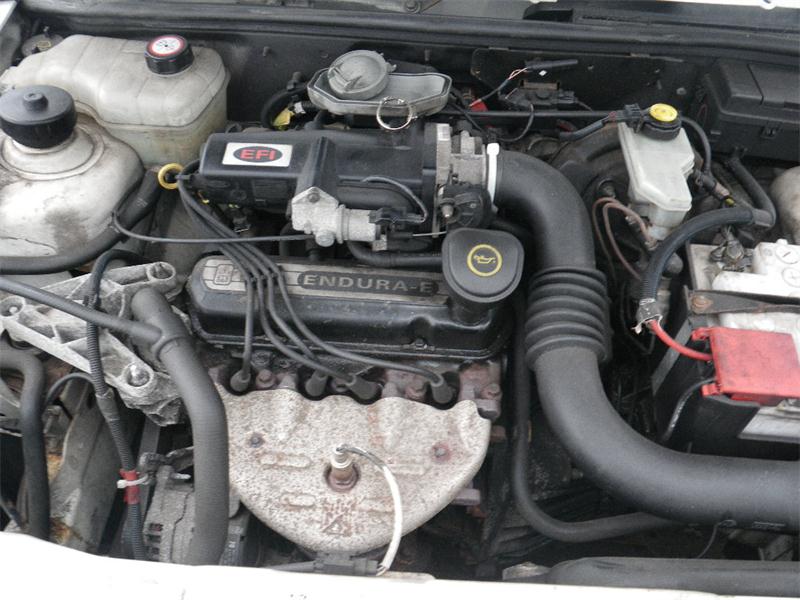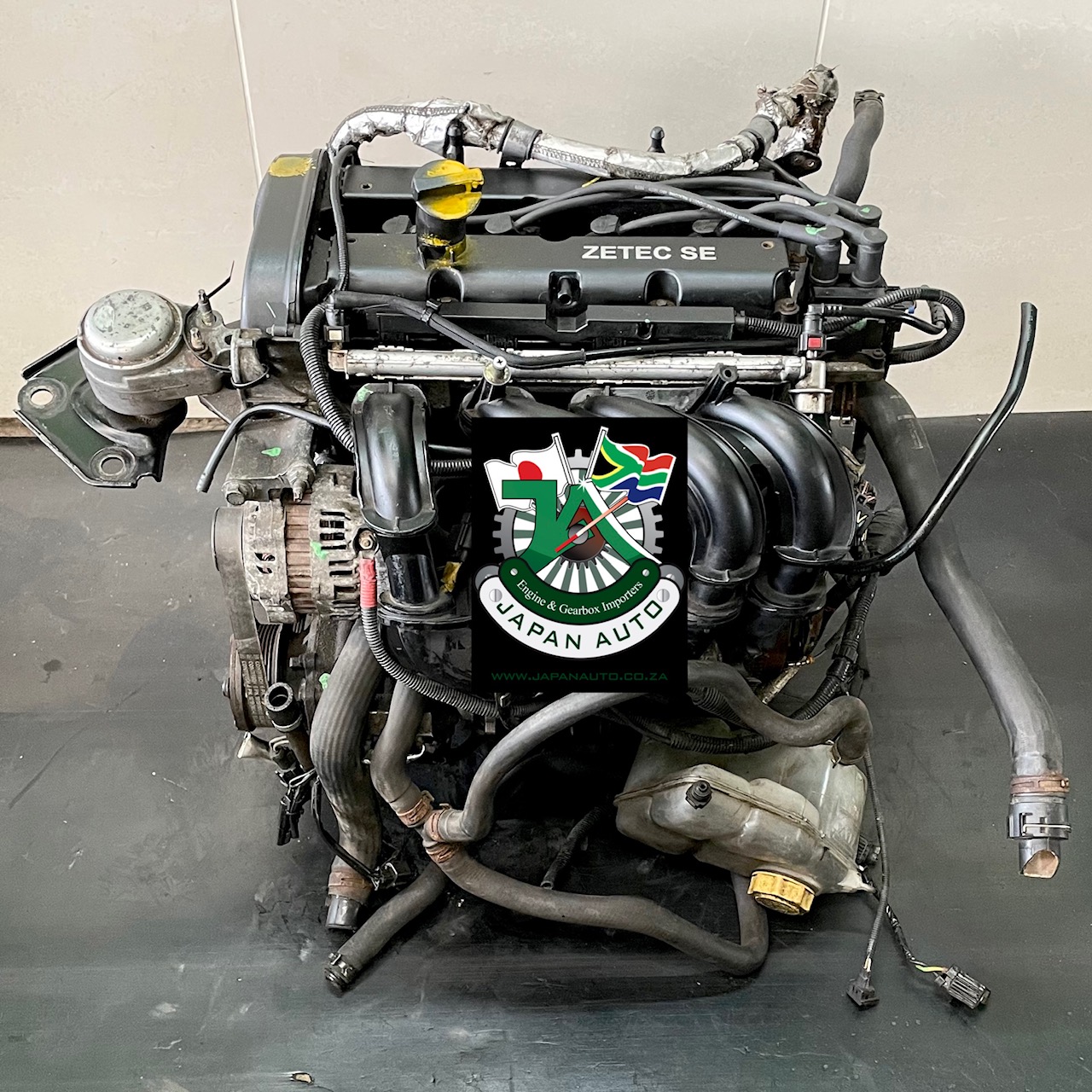How to Diagnose Ford Fiesta Engine Issues and Prevent Future Problems
Wiki Article
The Future of Engines: Innovations Driving Lasting Power Solutions
As the automotive industry browses the necessary shift in the direction of sustainability, the future of engines is progressively defined by groundbreaking technologies. Electric engine developments, along with promising developments in hydrogen gas cells and biofuels, are reshaping the landscape of power options. The development of crossbreed systems additionally complicates this evolution, offering both opportunities and obstacles to decrease discharges efficiently. Coupled with the integration of fabricated intelligence in engine design, these technical strides raise vital inquiries about their long-term feasibility and influence on traditional paradigms. What might this mean for the market and customers alike?Electric Engine Developments
The evolution of electric engine developments signifies a pivotal change in the auto and aerospace markets, driven by the urgent requirement for lasting choices to nonrenewable fuel sources. This change is identified by considerable innovations in battery technology, power electronics, and electrical motor layout, which collectively improve the effectiveness and performance of electrical engines.Current advancements have actually brought about the production of lighter, a lot more energy-dense batteries, such as lithium-silicon and solid-state batteries, which guarantee longer varieties and shorter billing times. Additionally, renovations in electrical motor effectiveness, such as the use of permanent magnets and advanced cooling down systems, allow electric engines to operate properly under varying conditions. These improvements not only improve lorry performance but also add to a decrease in total energy consumption.
Additionally, the assimilation of advanced software algorithms has enhanced power monitoring in electrical lorries, permitting regenerative braking and predictive billing methods. As makers increasingly welcome electric propulsion, the auto and aerospace sectors are experiencing a paradigm shift in the direction of greener technologies. This evolution not only fulfills regulative needs however additionally aligns with customer choices for eco friendly transportation options, solidifying electrical engines as a keystone of future lasting mobility.
Developments in Biofuels
As the aerospace and automobile sectors progressively focus on lasting energy sources, innovations in biofuels arise as a corresponding remedy to electrical engines. Biofuels, derived from natural materials such as crops, waste, and algae, provide a cutting-edge opportunity for decreasing greenhouse gas emissions and reliance on fossil fuels.Recent research has actually concentrated on improving the effectiveness and sustainability of biofuel production. Second-generation biofuels make use of non-food feedstocks, reducing competitors with food supply and decreasing environmental impact. Advancements in synthetic biology have actually allowed the design of microorganisms to produce biofuels more efficiently, leading to greater yields and lower manufacturing expenses.
In addition, the growth of drop-in biofuels permits smooth assimilation into existing infrastructure, allowing a smoother shift for markets commonly depending on fossil fuels. ford fiesta engine. These gas can be made use of in present engines without modifications, promoting their adoption throughout numerous fields
Investments in biofuel technology, together with helpful policies, are necessary to drive technology and scalability. As the global neighborhood looks for to combat environment change, biofuels offer a practical, instant remedy that lines up with the overarching goal of sustainability in transport and aeronautics.
Hydrogen Fuel Cell Innovation
A growing number of scientists and business are checking out hydrogen fuel cell innovation as a sensible option to conventional power resources in transportation and power systems. This innovation converts chemical power from hydrogen into electrical power via an electrochemical response, with water as the only by-product, making it an eco-friendly alternative.The core of hydrogen gas cells is the gas cell stack, where hydrogen molecules are divided into electrons and protons. The get more circulation of electrons creates electricity, while protons relocate through a membrane layer to combine with oxygen from the air, creating water. This procedure leads to high efficiency and reduced discharges, placing hydrogen fuel cells as a critical gamer in the transition to lasting power.
Considerable innovations have actually been made in enhancing the toughness and efficiency of gas cells, together with decreasing costs through cutting-edge manufacturing techniques. In addition, the advancement of hydrogen production methods, such as electrolysis powered by eco-friendly power resources, improves the sustainability of the overall system. As infrastructure for hydrogen refueling expands and manufacturing techniques come to be a lot more effective, hydrogen gas cell technology holds wonderful assurance for decarbonizing numerous fields, consisting of sturdy transport and fixed power generation.
Hybrid Systems and Their Influence
Hybrid systems represent a considerable advancement in sustainable engine technology, combining conventional inner burning engines with electrical propulsion to optimize energy effectiveness and lower emissions (ford fiesta engine). This double method enables automobiles to make use of both power resources, enabling higher flexibility in power consumption and lowering dependence on fossil gas

In enhancement to ecological benefits, crossbreed systems offer customers a sensible transition in the direction of fully electric vehicles. They reduce array anxiety by combining the ease of fuel with the benefits of electric propulsion, making them an attractive choice for a bigger target market.
The Function of AI in Engine Design
Leveraging advanced formulas and artificial intelligence techniques, the vehicle sector is significantly incorporating expert system (AI) right into engine layout processes. AI boosts the efficiency and performance of layout by examining vast datasets to determine ideal setups and efficiency criteria. This capability allows designers to mimic various operating conditions and forecast engine behavior under several situations, considerably reducing the time and cost connected with traditional prototyping approaches.Additionally, AI facilitates the development of advanced products and burning procedures customized for sustainability. By optimizing fuel performance and reducing emissions, AI-driven designs align with global initiatives aimed at minimizing the carbon footprint of automobile engines. Artificial intelligence algorithms can also anticipate upkeep needs, leading to improved reliability and longevity of engine parts.
In Addition, AI contributes in the integration of electrification innovations, such as crossbreed systems, where it can maximize battery management and power healing site here procedures. As the market moves in the direction of even more sustainable power services, the role of AI in engine style ends up being progressively important, driving innovation and boosting the efficiency of future engines. Eventually, the partnership between AI and engine layout see this declares a new age of smarter, cleaner, and much more reliable vehicle innovations.

Final Thought
In verdict, the future of engines is being formed by a merging of ingenious innovations that prioritize sustainability. Electric engine developments, biofuel developments, hydrogen fuel cells, and crossbreed systems jointly contribute to a significant reduction in discharges and environmental influence.Electric engine advancements, alongside appealing growths in hydrogen fuel cells and biofuels, are improving the landscape of power services. In addition, renovations in electric motor efficiency, such as the usage of long-term magnets and advanced cooling systems, allow electrical engines to operate efficiently under differing conditions. By optimizing gas performance and reducing discharges, AI-driven styles line up with global efforts aimed at decreasing the carbon impact of automobile engines. As the industry moves towards more sustainable power services, the function of AI in engine layout ends up being increasingly vital, driving technology and enhancing the performance of future engines. Electric engine innovations, biofuel advancements, hydrogen gas cells, and hybrid systems jointly add to a considerable decrease in emissions and environmental impact.
Report this wiki page